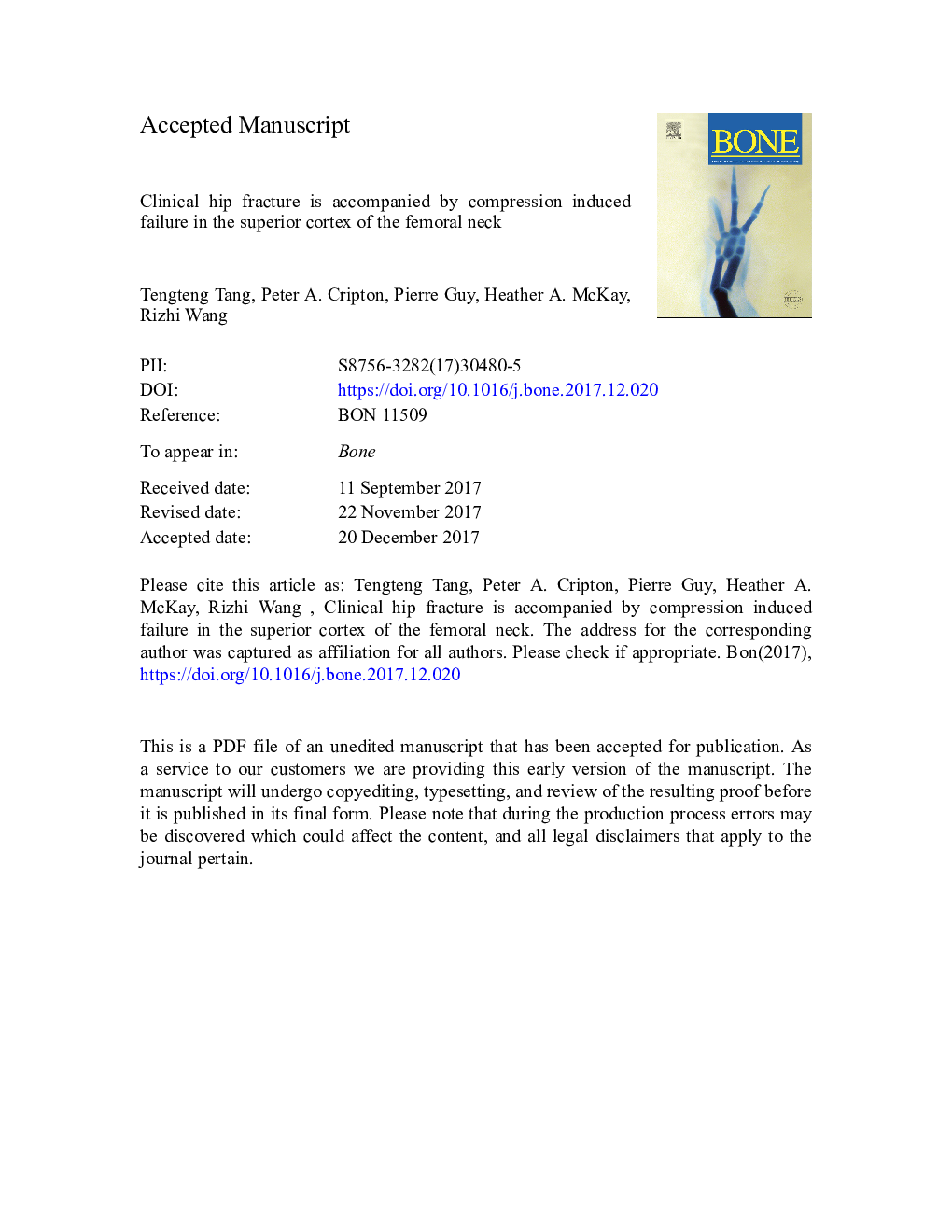| Article ID | Journal | Published Year | Pages | File Type |
|---|---|---|---|---|
| 8625133 | Bone | 2018 | 47 Pages |
Abstract
Hip fractures pose a major health problem throughout the world due to their devastating impact. Current theories for why these injuries are so prevalent in the elderly point to an increased propensity to fall and decreases in bone mass with ageing. However, the fracture mechanisms, particularly the stress and strain conditions leading to bone failure at the hip remain unclear. Here, we directly examined the cortical bone from clinical intra-capsular hip fractures at a microscopic level, and found strong evidence of compression induced failure in the superior cortex. A total of 143 sections obtained from 24 femoral neck samples that were retrieved from 24 fracturing patients at surgery were examined using laser scanning confocal microscopy (LSCM) after fluorescein staining. The stained microcracks showed significantly higher density in the superior cortex than in the inferior cortex, indicating a greater magnitude of strain in the superior femoral neck during the failure-associated deformation and fracture process. The predominant stress state for each section was reconstructed based on the unique correlation between the microcrack pattern and the stress state. Specifically, we found clear evidence of longitudinal compression and buckling as the primary failure mechanisms in the superior cortex. These findings demonstrate the importance of microcrack analysis in studying clinical hip fractures, and point to the central role of the superior cortex failure as an important aspect of the failure initiation in clinical intra-capsular hip fractures.
Related Topics
Life Sciences
Biochemistry, Genetics and Molecular Biology
Developmental Biology
Authors
Tengteng Tang, Peter A. Cripton, Pierre Guy, Heather A. McKay, Rizhi Wang,
